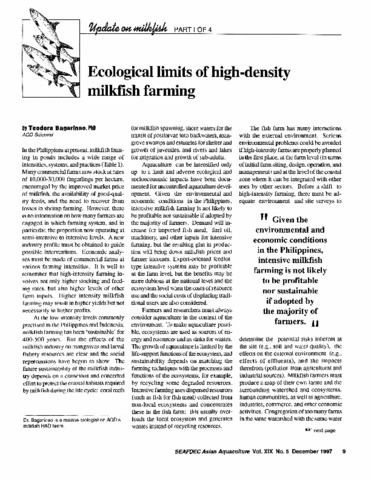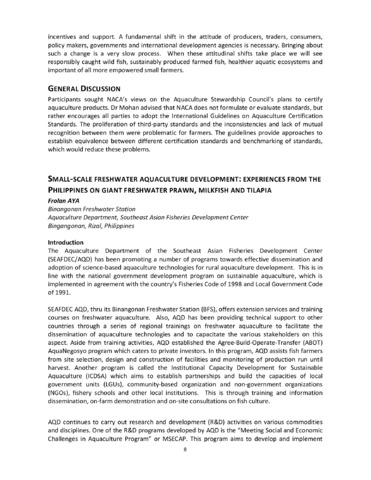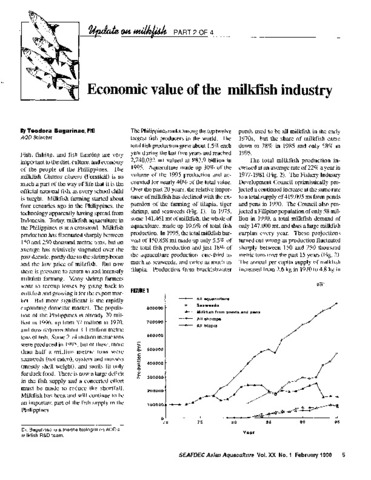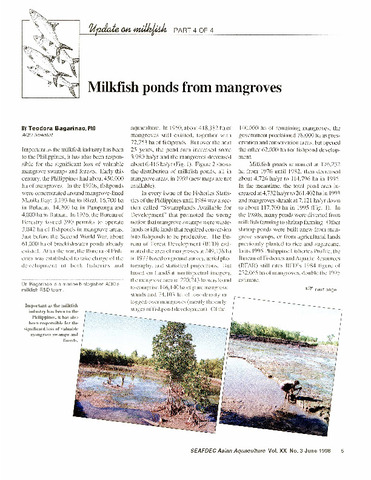Ecological limits of high-density milkfish farming
Share
trừu tượng
In the Philippines at present, milkfish farming in ponds includes a wide range of intensities, systems and practices. To make aquaculture possible, ecosystems are used as sources of energy and resources and as sinks for wastes. The growth of aquaculture is limited by the life-support functions of the ecosystem, and sustainability depends on matching the farming techniques with the processes and functions of the ecosystems, for example, by recycling some degraded resources. The fish farm has many interactions with the external environment. Serious environmental problems may be avoided if high-intensity farms are properly planned in the first place, at the farm level and at the level of the coastal zone where it can be integrated with other uses by other sectors. It is believed that the key to immediate success in the mass production of milkfish for local consumption and for export of value-added forms may be in semi-intensive farming at target yields of 3 tons per ha per year, double the current national average. Intensive milkfish farming will be limited by environmental, resource and market constraints. Integrated intensive farming systems are the appropriate long-term response to the triple needs of the next century: more food, more income, and more jobs for more people, all from less land, less resources, and less non-renewable energy.
Suggested Citation
Bagarinao, T. (1997). Ecological limits of high-density milkfish farming. SEAFDEC Asian Aquaculture , 19(5), 9-11. http://hdl.handle.net/10862/1771
Chủ thể
Taxonomic term
Bộ sưu tập
Related items
Showing items related by title, author, creator and subject.
-
Small-scale freshwater aquaculture development: Experiences from the Philippines on giant freshwater prawn, milkfish and tilapia
Aya, Frolan (Japan International Cooperation Agency, 2013-12)The Aquaculture Department of the Southeast Asian Fisheries Development Center (SEAFDEC/AQD) has been promoting a number of programs towards effective dissemination and adoption of science-based aquaculture technologies ... -
Economic value of the milkfish industry
Bagarinao, Teodora (Aquaculture Department, Southeast Asian Fisheries Development Center, 1998)A brief description is given of the milkfish (Chanos chanos) farming industry in the Philippines. Over the past 20 years, the relative importance of milkfish has declined with the expansion of tilapia, tiger shrimp and ... -
Milkfish ponds from mangroves
Bagarinao, Teodora (Aquaculture Department, Southeast Asian Fisheries Development Center, 1998)






